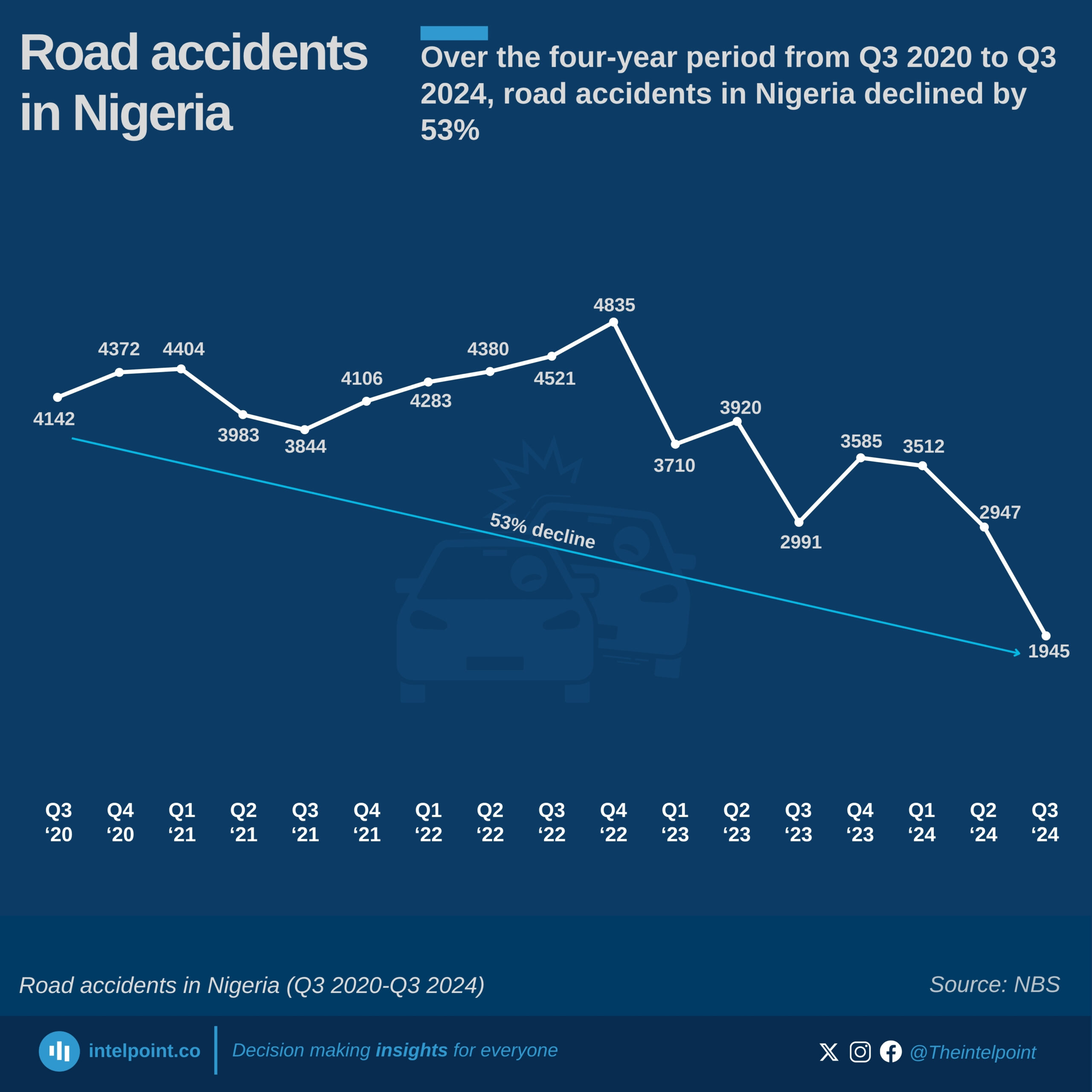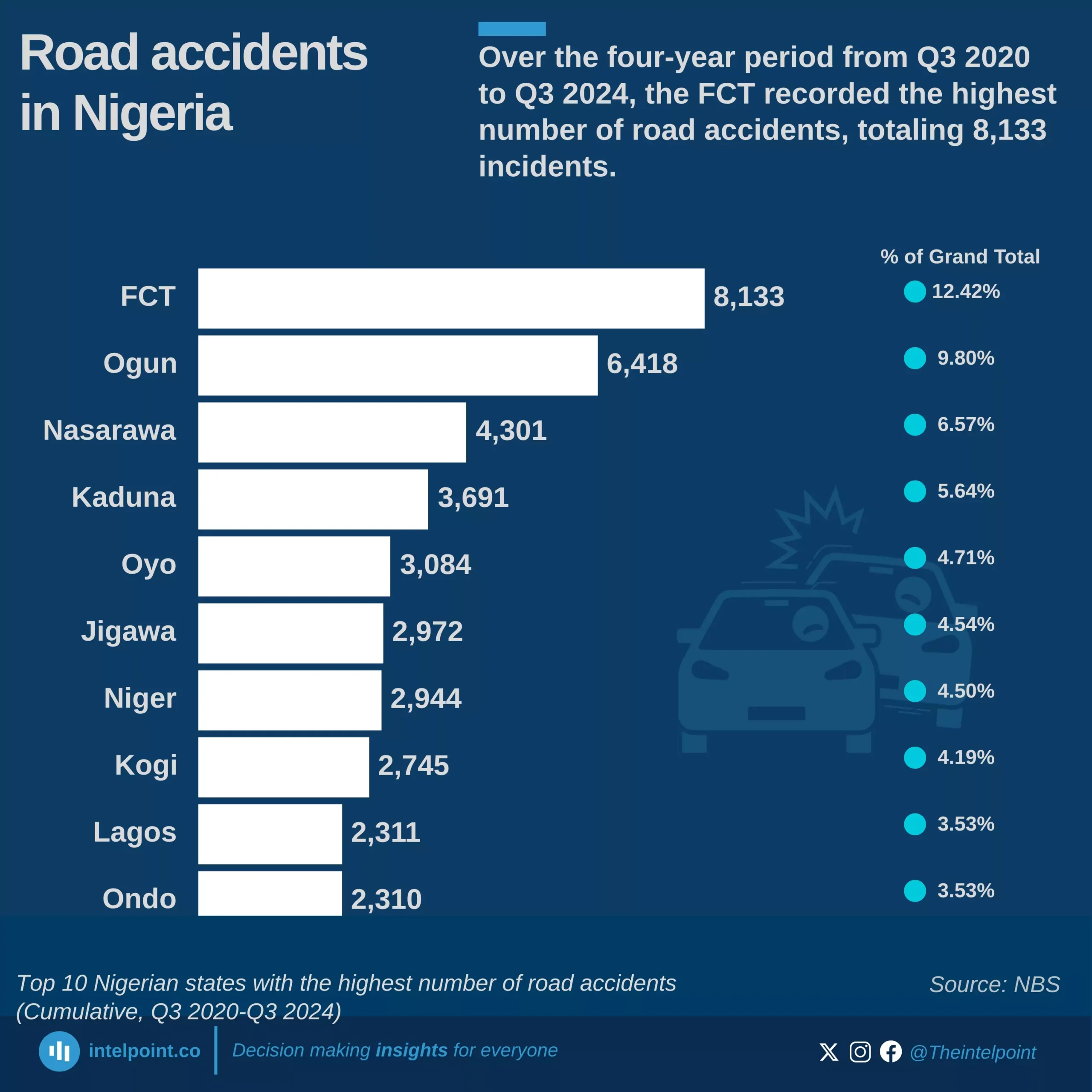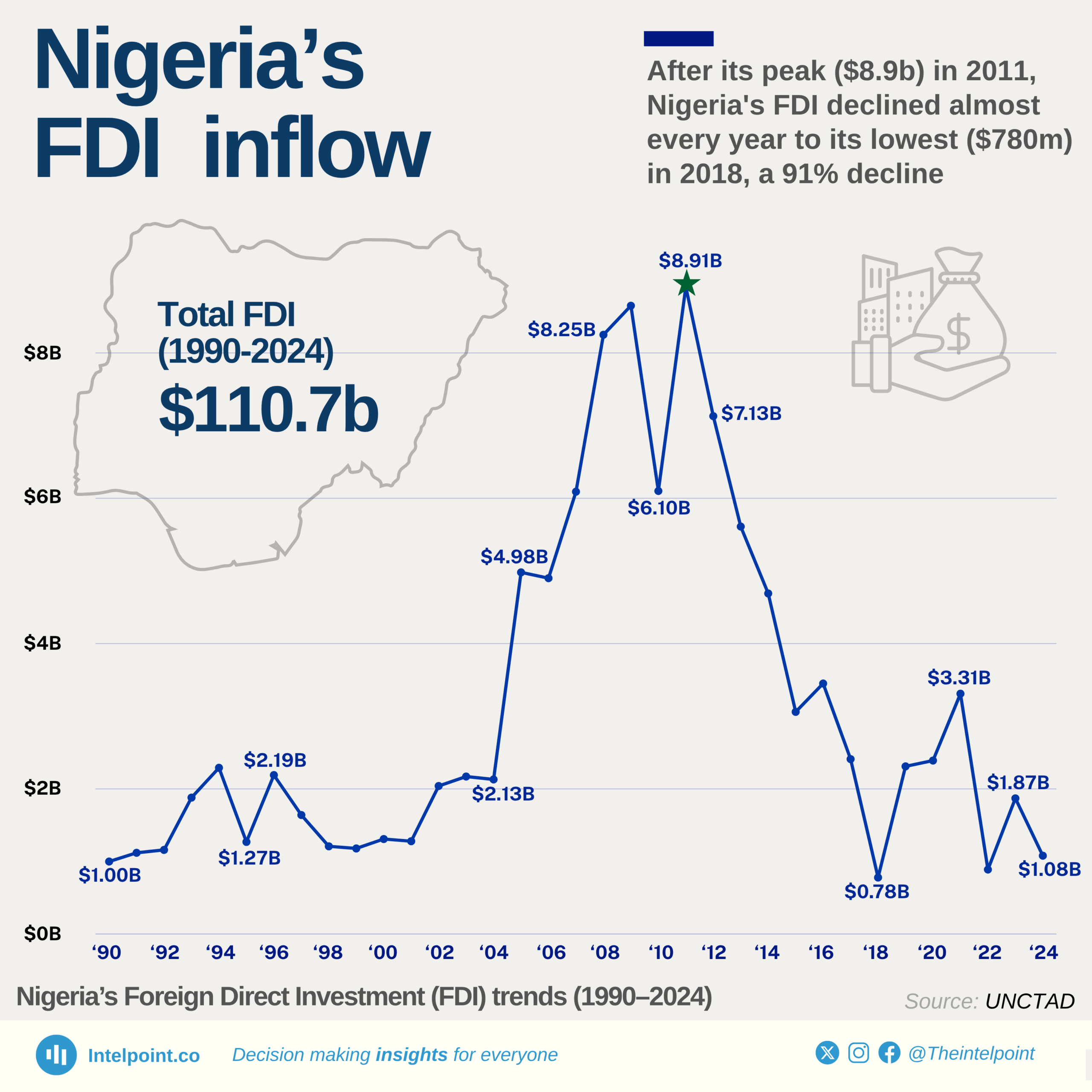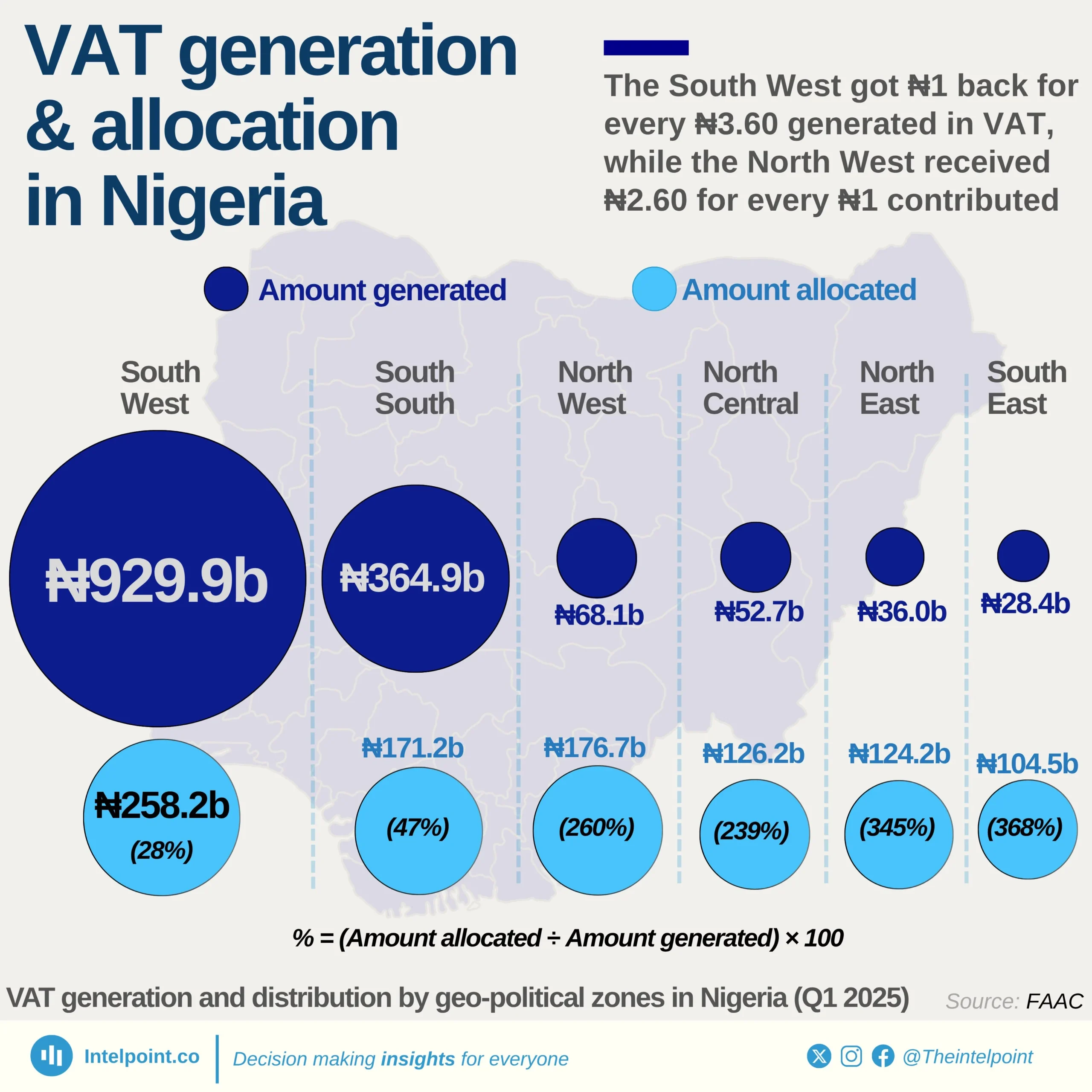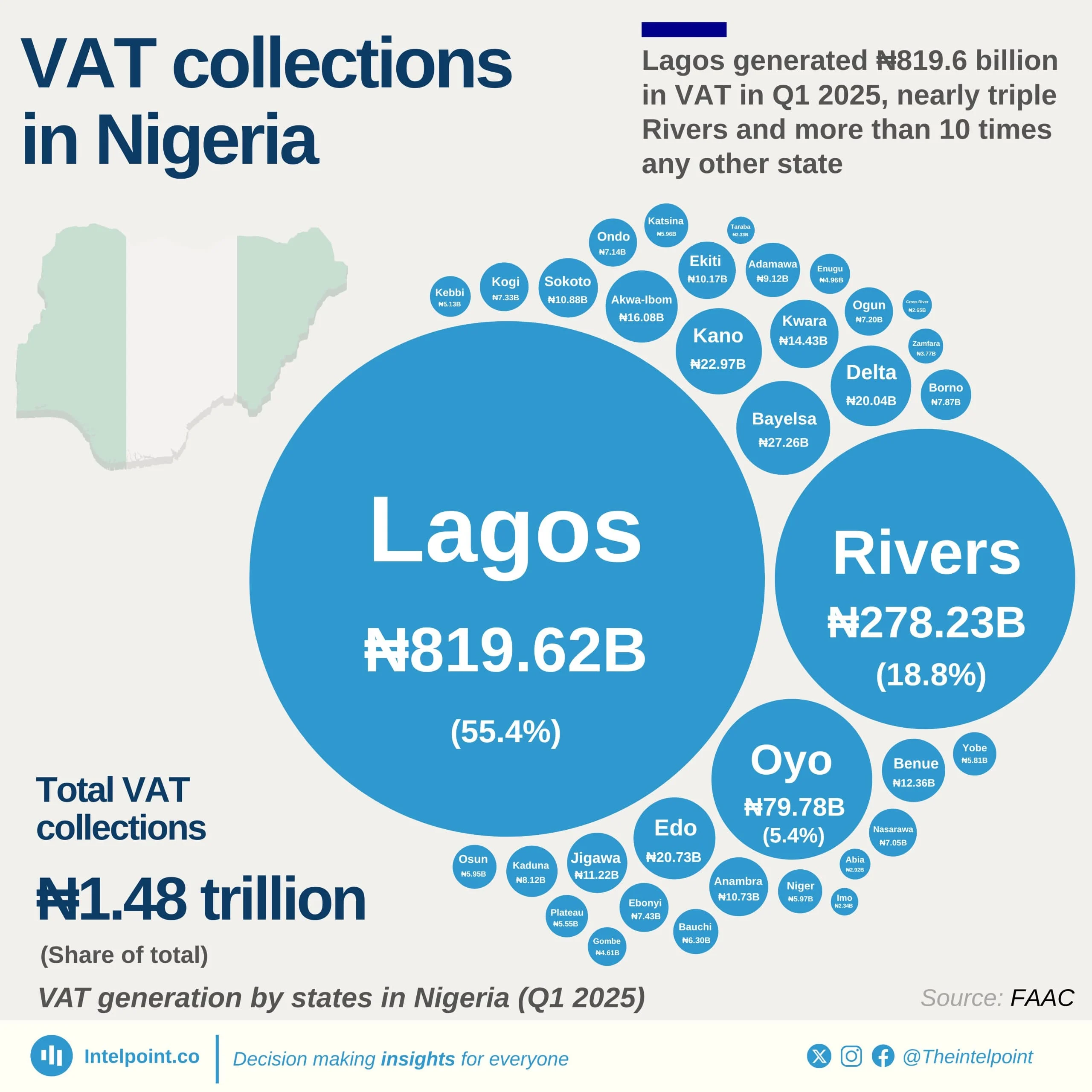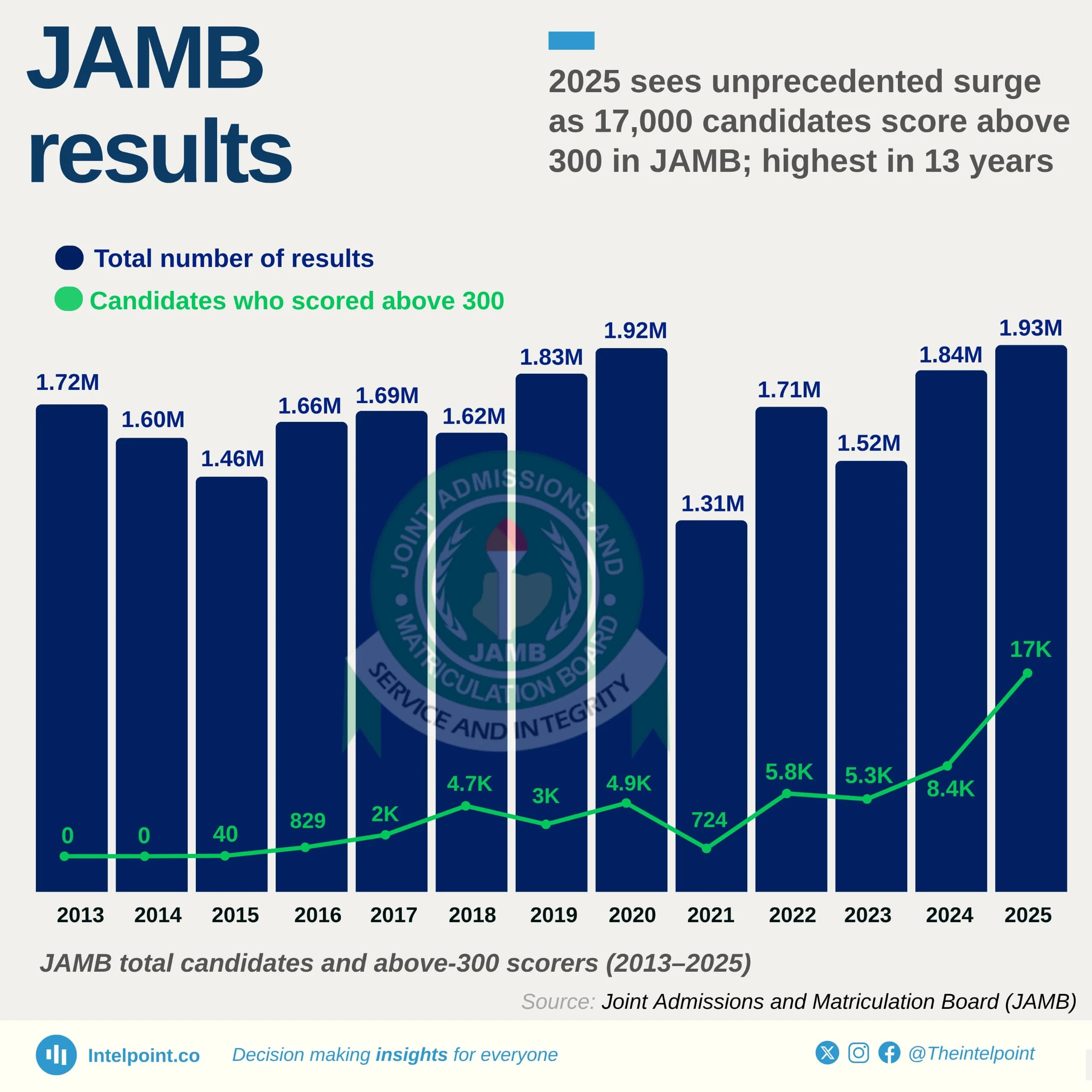The VAT distribution in the North-West geopolitical zone of Nigeria highlights a major fiscal imbalance, where states receive far more than they remitted. The region generated ₦28.31 billion in VAT but received ₦66.55 billion, a 135% increase, showing a system where VAT is redistributed to ensure financial balance across states.
Kano, the economic powerhouse of the region, remitted ₦9.59 billion, accounting for 34% of the zone’s total VAT. Yet, it received only ₦13.57 billion, a 41.5% increase. This is the lowest percentage gain in the region, despite Kano being the highest revenue-generating state. In contrast, Zamfara, the lowest contributor at ₦1.45 billion, received ₦7.72 billion, an astonishing 5.3× its remittance (+433%), the highest relative gain in the zone.
Similarly, Kaduna (₦3.50B → ₦10.18B) and Katsina (₦3.86B → ₦10.01B) nearly tripled their VAT remittance in allocation, further emphasising the redistribution formula. The entire region received ₦2.35 for every ₦1 it contributed, confirming that VAT sharing favours equalisation over economic output.
